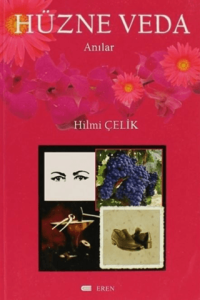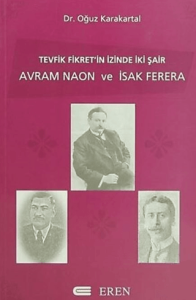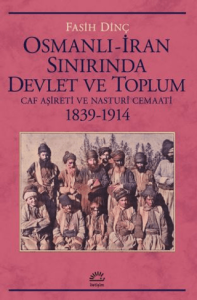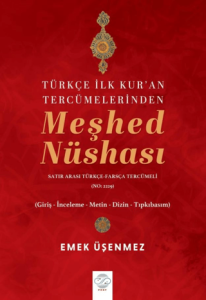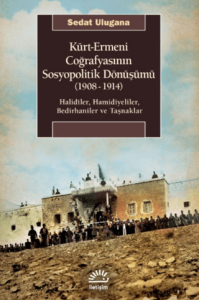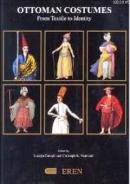
The study of clothes and dressing has great potential for social and cultural history. Typically Ottoman urbanites situated their fellow men after a glance at the clothing worn by the latter. As to the women, such conclusions were more difficult to draw, as all females were to be modestly covered up and ideally almost invisible. Yet in practice, at least from the eighteenth century onwards, it was often possible, at least in Istanbul, to distinguish fashionable from soberly pious women. To be aware of people's modes of dressing thus was part of knowing one's way around in Ottoman society.
But clothes were not only part of the informal social order, enforced, as far as the individual was concerned, by relatives and neighbours. In addition the Ottoman state took a major interest in regulating the public appearance of its subjects; thus the adherents of the empire's varying religions were to be immediately distinguishable through their clothing. At the same time, particularly but not exclusively in the nineteenth century, the unification of costume among public officials and military men was another state concern. Official regulation of costume, enforced or merely attempted, thus should be studied as part of the public image of Ottoman society, as it existed in the heads of bureaucrats and also of the sultan himself.
From a moderately wealthy Ottoman subject's point of view, clothes formed an essential part of the presentation of self. This becomes clear once photography had become popular in these circles during the later nineteenth century. As people could usually choose what clothes they wore when having their pictures taken, these images can be taken as statements concerning official position, wealth, modernity or elegance. Moreover clothes might refer to cultural relations with the outside world that the wearer was involved in, perhaps in real life but at least in his/her imagination.
Conversely Polish gentlemen of the seventeenth century developed a preference for kaftans visibly inspired by Ottoman prototypes. These were meant to project a synthetic identity described as ‘Sarmatian', but certainly also to advertise the fact that its wearers possessed connections to Istanbul. Given the power and wealth of the sultans' court, features of Ottoman dress also were imitated among other European aristocrats, including King Henry VIII. of England. Thus apart from everything else, the history of Ottoman clothing possesses numerous intercultural dimensions, that the contributors to this volume have attempted to explore.
Introduction, or why and how one might want to study Ottoman clothes, Suraiya Faroqhi
The historiography of costume: a brief survey, Odile Blanc
Furs and skins owned by the Sultans, Hülya Tezcan
Female costumes in late fifteenth-century Bursa, Suraiya Faroqhi
The place of dress in pre-modern costume albums, Leslie Meral Schick
Dress codes in the Ottoman Empire: the case of the Franks, Matthew Elliot
Whose laws? Gendering the Ottoman sumptuary regime, Madeline C. Zilfi
Clothing the ‘uncivilized': military recruitment in Ottoman Yemen
and the quest for ‘native' uniforms,1880-1914, Thomas Kühn
Undressing the Albanian: finding social history in Ottoman material cultures, Isa Blumi
How did a vizier dress in the eighteenth century? , Christoph K. Neumann
Ottoman kaftans with an Italian identity, Louise W. Mackie
Ottoman influences in Western dress, Charlotte Jirousek
A sartorial tribute to late Tanzimat Ottomanism: The Elbise-i Osmaniyye album, Ahmet Erso
The study of clothes and dressing has great potential for social and cultural history. Typically Ottoman urbanites situated their fellow men after a glance at the clothing worn by the latter. As to the women, such conclusions were more difficult to draw, as all females were to be modestly covered up and ideally almost invisible. Yet in practice, at least from the eighteenth century onwards, it was often possible, at least in Istanbul, to distinguish fashionable from soberly pious women. To be aware of people's modes of dressing thus was part of knowing one's way around in Ottoman society.
But clothes were not only part of the informal social order, enforced, as far as the individual was concerned, by relatives and neighbours. In addition the Ottoman state took a major interest in regulating the public appearance of its subjects; thus the adherents of the empire's varying religions were to be immediately distinguishable through their clothing. At the same time, particularly but not exclusively in the nineteenth century, the unification of costume among public officials and military men was another state concern. Official regulation of costume, enforced or merely attempted, thus should be studied as part of the public image of Ottoman society, as it existed in the heads of bureaucrats and also of the sultan himself.
From a moderately wealthy Ottoman subject's point of view, clothes formed an essential part of the presentation of self. This becomes clear once photography had become popular in these circles during the later nineteenth century. As people could usually choose what clothes they wore when having their pictures taken, these images can be taken as statements concerning official position, wealth, modernity or elegance. Moreover clothes might refer to cultural relations with the outside world that the wearer was involved in, perhaps in real life but at least in his/her imagination.
Conversely Polish gentlemen of the seventeenth century developed a preference for kaftans visibly inspired by Ottoman prototypes. These were meant to project a synthetic identity described as ‘Sarmatian', but certainly also to advertise the fact that its wearers possessed connections to Istanbul. Given the power and wealth of the sultans' court, features of Ottoman dress also were imitated among other European aristocrats, including King Henry VIII. of England. Thus apart from everything else, the history of Ottoman clothing possesses numerous intercultural dimensions, that the contributors to this volume have attempted to explore.
Introduction, or why and how one might want to study Ottoman clothes, Suraiya Faroqhi
The historiography of costume: a brief survey, Odile Blanc
Furs and skins owned by the Sultans, Hülya Tezcan
Female costumes in late fifteenth-century Bursa, Suraiya Faroqhi
The place of dress in pre-modern costume albums, Leslie Meral Schick
Dress codes in the Ottoman Empire: the case of the Franks, Matthew Elliot
Whose laws? Gendering the Ottoman sumptuary regime, Madeline C. Zilfi
Clothing the ‘uncivilized': military recruitment in Ottoman Yemen
and the quest for ‘native' uniforms,1880-1914, Thomas Kühn
Undressing the Albanian: finding social history in Ottoman material cultures, Isa Blumi
How did a vizier dress in the eighteenth century? , Christoph K. Neumann
Ottoman kaftans with an Italian identity, Louise W. Mackie
Ottoman influences in Western dress, Charlotte Jirousek
A sartorial tribute to late Tanzimat Ottomanism: The Elbise-i Osmaniyye album, Ahmet Erso








